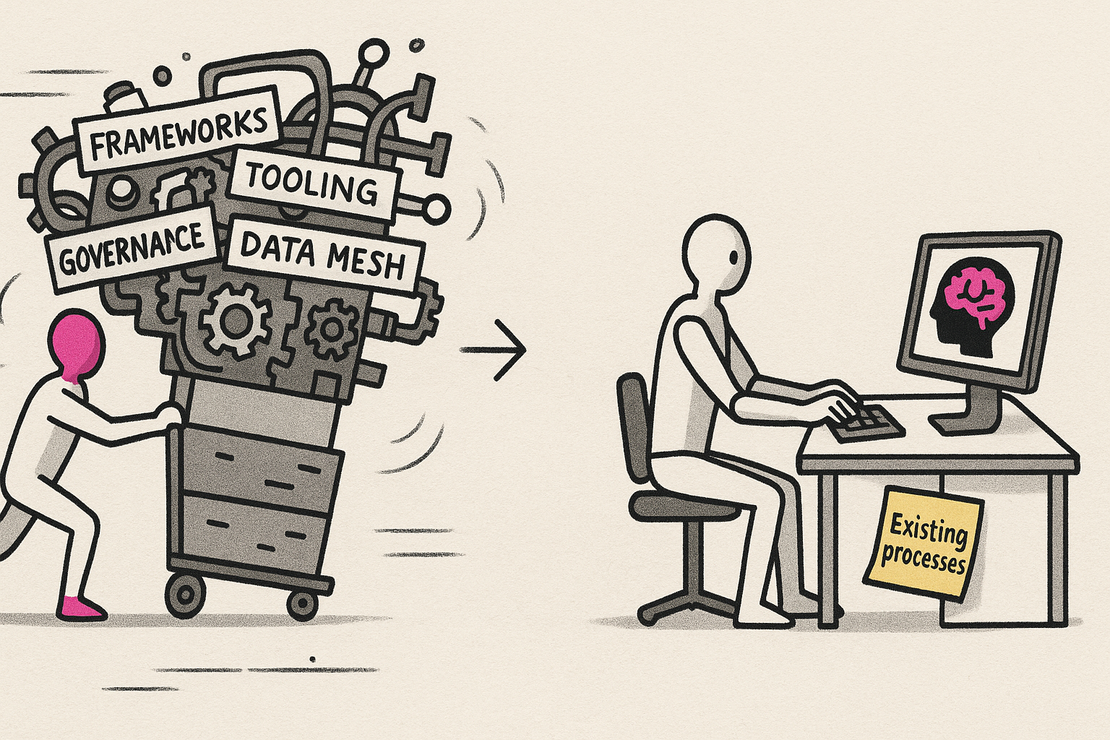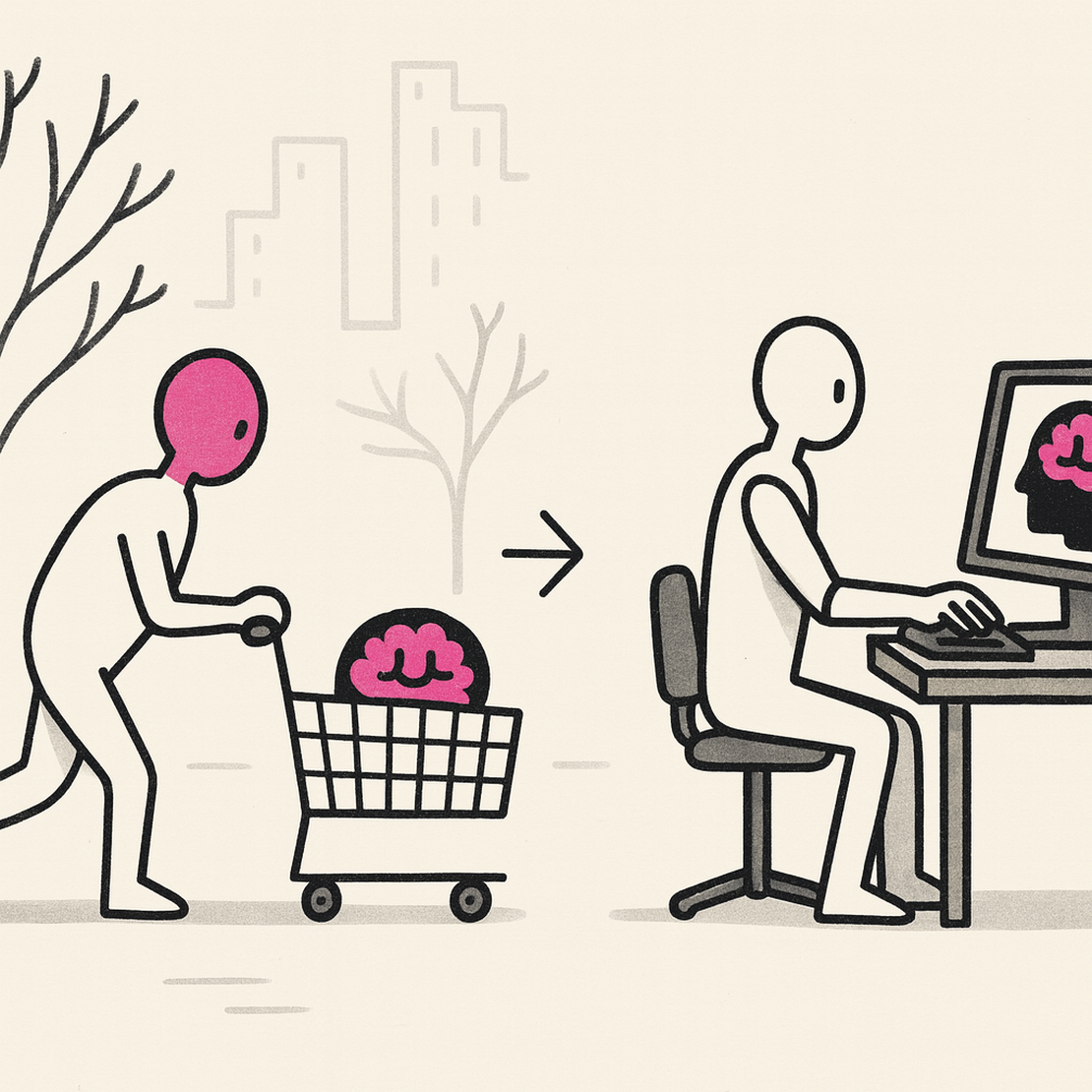The Risk of Over-engineering AI Enablement: A Successful Business Already Has What It Needs to Win with AI
AI is here. The pressure is on. And across industries, executives are scrambling to figure out how to “do AI right.”
Unfortunately, many are making the same costly mistake:
They’re ignoring the high-performing delivery models they already have—and building new, unproven structures instead.
Inspired by well-meaning but misguided advice , they’re forming AI Centers of Excellence, hiring for cross-disciplinary teams, and launching collaborative working groups… all in the name of innovation.
The Model That Already Works
In most successful businesses, there’s a proven pattern:
Business units bring new products and services to market through vertically aligned enablement teams—dedicated developers, technologists, analysts, and product managers embedded within the line of business.
This structure didn’t come from a strategy white-paper. It evolved through necessity—because it delivers results. Fast. Consistently. Accountably.
These business-aligned teams: • Move at the speed of market demand • Build what actually gets used • Are held to performance metrics, not pilot theater • Already understand their domain inside and out
This is the engine of commercial execution. And AI, if treated properly, should be another gear in that engine—not a separate machine.
The Mistake: Reinventing Business Enablement for AI
Instead of using what works, many organizations are now building: • Centers of Excellence detached from business impact • Multidisciplinary AI pods with no P&L responsibility • Consensus-first models that move at committee speed It sounds strategic. But in reality? These structures tend to get stuck. They overthink. They over-process. They underdeliver.
AI is moving too fast for internal experiments in collaboration and governance models that have never worked before.
The consequence? Delayed value. Frustrated business units. And eventually, fragmented efforts as teams start building their own shadow AI projects to get things done.
The Fix: Don’t Overthink It. Embed It.
If you’re serious about enabling the business with AI, here’s what to do:
- Treat AI like any other business accelerator Embed it into the verticals where product and revenue happen. Let the business lead.
- Empower existing enablement teams Your developers, analysts, and technologists already serving business units are the ideal launchpad for AI tools and solutions. Don’t sideline them.
- Give AI experts a role—not the reins Use AI talent to accelerate, not direct. Keep business priorities in the driver’s seat.
- Govern wisely, not bureaucratically Yes, AI governance matters. But apply it to existing business processes, not as a gating function that delays innovation. Ensure leadership can transparently report that AI is being adopted in a prudent, responsible, and compliant way—without throttling progress.
Final Thought: Use What Already Works
AI doesn’t require reinvention. It requires reinforcement. You already have the teams. You already have the workflows. You already know how to bring valuable new offerings to market.
AI should be fuel for that machine—not a reason to rebuild it.
Organizations that recognize this will move faster, see impact sooner, and outpace competitors tangled in organizational redesign. Because in this next phase of transformation, the winners won’t be the most “innovative”—they’ll be the most operationally ready.


